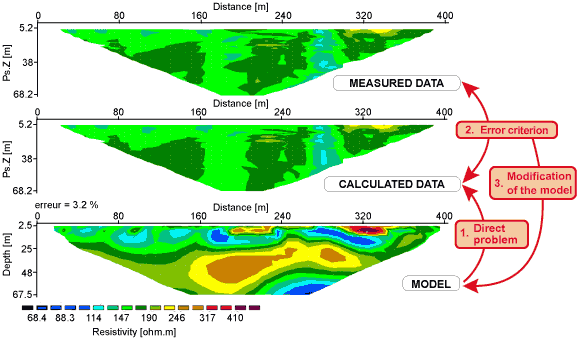The values obtained are apparent resistivities. Measurement represents a value, which integrates the resistivities of a certain volume of the earth. From these values, we want to find the thicknesses and calculated resistivities of the various involved bodies. These calculated resistivities are relatively close to the true resistivities of the bodies.

![]() Inversion for an iterative method
Inversion for an iterative method
(from Res2Dinv, LOKE, 1996)
Here are the various steps of the method of inversion:
- A basic model (C) is first of all elaborated, either starting from the apparent resistivities data (A), or starting from a priori information entered by the user.
- The algorithm calculates the response of this model by carrying out a " fictitious acquisition ", the direct problem (i.e. the calculation of apparent resistivities starting from true resistivities) being known (stage 1). We obtains the profile (B)
- The algorithm determines the degree of difference between profiles (A) and (B) according to a certain criterion (stage 2). Model (C) is then modified with the aim of decreasing the degree of difference (error) between (A) and (B) (stage 3). The operation is then repeated in an iterative way until the process converges (the error does not decrease significantly any more).